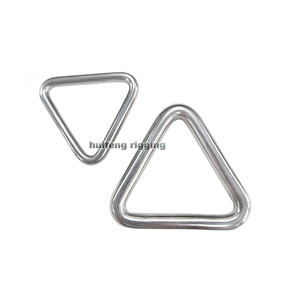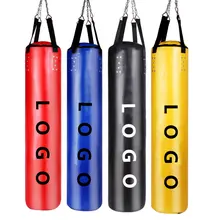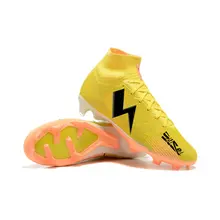The term cage ring is most commonly associated with the robust structures used in combat sports such as mixed martial arts (MMA) and wrestling. These enclosures are designed to ensure the safety of the athletes while providing a clear and unobstructed view for spectators. The cage ring, also known as an mma octagon ring or wrestling ring and cage, is a pivotal piece of equipment in the world of combat sports, embodying both the physical and symbolic center of the action.
Types of Cage Rings
Diving deeper into the types of cage rings, we find a variety of designs tailored to different combat sports. The mma octagon ring, with its eight-sided structure, is a staple in MMA competitions, providing a unique dynamic to the sport. On the other hand, the wrestling cages are often square-shaped, aligning with the traditional wrestling ring format. For training purposes, there are smaller ring to cage fight gear setups that allow athletes to practice in a more confined space, simulating the close-quarters combat of a real match. Each type caters to specific styles of fighting and training needs, reflecting the diversity within combat sports.
Structure of Cage Rings
The physical components of a cage ring are meticulously designed to create a secure and functional arena. The base is typically a raised platform, ensuring a level fighting surface. Above this, the cage itself is constructed with a series of metal posts and chain-link fencing, creating the enclosure. Gates are strategically placed to allow fighters and officials entry and exit. The integration of these components ensures a seamless operation during matches, where the focus is on the fight without any interference from the ring's structure.
Materials in Cage Rings
Exploring the materials used in cage rings, we find that high-tensile strength steel is often the metal of choice for its durability and resilience. The chain-link fence is typically made from coated steel wire, which provides flexibility and visibility. Padding used around the edges of the cage is usually made from high-density foam, covered with a durable material like vinyl. These materials are chosen for their longevity and ability to withstand the high-impact nature of combat sports, ensuring both fighter safety and product durability.
Business Usages and Applications
Cage rings are indispensable in the business of combat sports, serving as the centerpiece in gyms, training centers, and competition venues. They are used in the staging of professional and amateur bouts, in the training of athletes, and as a key attraction in sports facilities. The presence of a professional-grade cage ring can be a significant draw for potential gym members and can add credibility to a training facility. In the context of events, a high-quality mma ring or wrestling cage can elevate the status of the competition, attracting sponsors and media attention, thereby creating substantial business value.
Functions of Cage Rings
The primary function of a cage ring is to provide a safe and regulated environment for combat sports. It is designed to contain the action, prevent athletes from falling out, and protect them from impact with its padded surfaces. The structure also functions as a boundary that defines the fighting area, which is essential for both training sessions and official matches, ensuring that the rules of the sport are upheld.
Features of Cage Rings
Distinct characteristics of cage rings include their modular design, allowing for easy assembly and disassembly, and their adaptability to different spaces and event scales. Innovations such as integrated shock-absorbing systems, reinforced welding points, and anti-corrosion coatings are unique selling points that set some monsters rings and cages apart from competitors. These features not only enhance the safety and functionality of the cage but also extend its lifespan, providing long-term value.
Benefits of Cage Rings
The benefits of a well-designed cage ring are manifold. For athletes, it provides a realistic training environment that prepares them for competition. For event organizers, it offers a reliable and safe venue that enhances the credibility of the sport. For gym owners, it serves as a durable piece of equipment that withstands the test of time and frequent use. Overall, a quality cage ring meets the needs of the combat sports community by ensuring safety, providing a professional setting, and supporting the growth of the sport.
How to Use and Maintain Cage Rings
Effective operation of a cage ring involves understanding its assembly, usage, and maintenance protocols. Installation should follow the manufacturer's guidelines to ensure safety. During use, regular inspections for any structural damage or wear are crucial. Cleaning should be performed with appropriate solutions that do not corrode the metal or degrade the padding. For maintenance, any damaged parts should be replaced promptly, and the entire structure should be checked for stability and safety regularly.
Choosing the Right Cage Ring
Selecting the right cage ring for a facility involves considering the space available, the level of use it will endure, and the types of events it will host. For professional competitions, an mma octagon ring or a wrestling ring and cage that meets regulatory standards is essential. For training centers, durability and versatility might be the priority, with the ability to adapt to various training scenarios being a key factor.
Target Audience and Needs
The target audience for cage rings includes combat sports practitioners, gym owners, and event organizers. Each has distinct needs: practitioners look for a realistic training environment, gym owners require durable and versatile equipment, and event organizers need reliable structures that ensure fighter safety and comply with regulatory standards. Understanding these needs is crucial for suppliers to provide products that meet the specific demands of the combat sports industry.
How does the material of a cage ring impact its performance?
The material of a cage ring is fundamental to its performance. Metal, being the core material, provides the necessary strength and stability. The type of metal, its thickness, and the quality of construction all contribute to the ring's ability to absorb impact, resist deformation, and ensure fighter safety. A well-constructed mma ring or wrestling cage made from premium metal can last for years, even with regular and rigorous use.
What should be considered when choosing a cage ring for a facility?
When selecting a cage ring for a facility, several factors should be considered. Size and space compatibility are crucial; the cage must fit the designated area while allowing for safe movement around its perimeter. Customization options are also important, as they can cater to specific training needs or branding requirements. Additionally, the ease of assembly and disassembly can be a significant consideration for facilities that host various events.
How can one ensure the longevity of a cage ring?
Ensuring the longevity of a cage ring involves regular maintenance and proper use. Inspecting the metal structure for any signs of wear or damage, ensuring that all padding is intact, and cleaning the materials to prevent corrosion are all essential practices. Proper training on how to use and care for the ring to cage boxing gloves, ring to cage headgear, and other accessories can also contribute to the overall longevity of the cage ring setup.









































 浙公网安备 33010002000092号
浙公网安备 33010002000092号 浙B2-20120091-4
浙B2-20120091-4